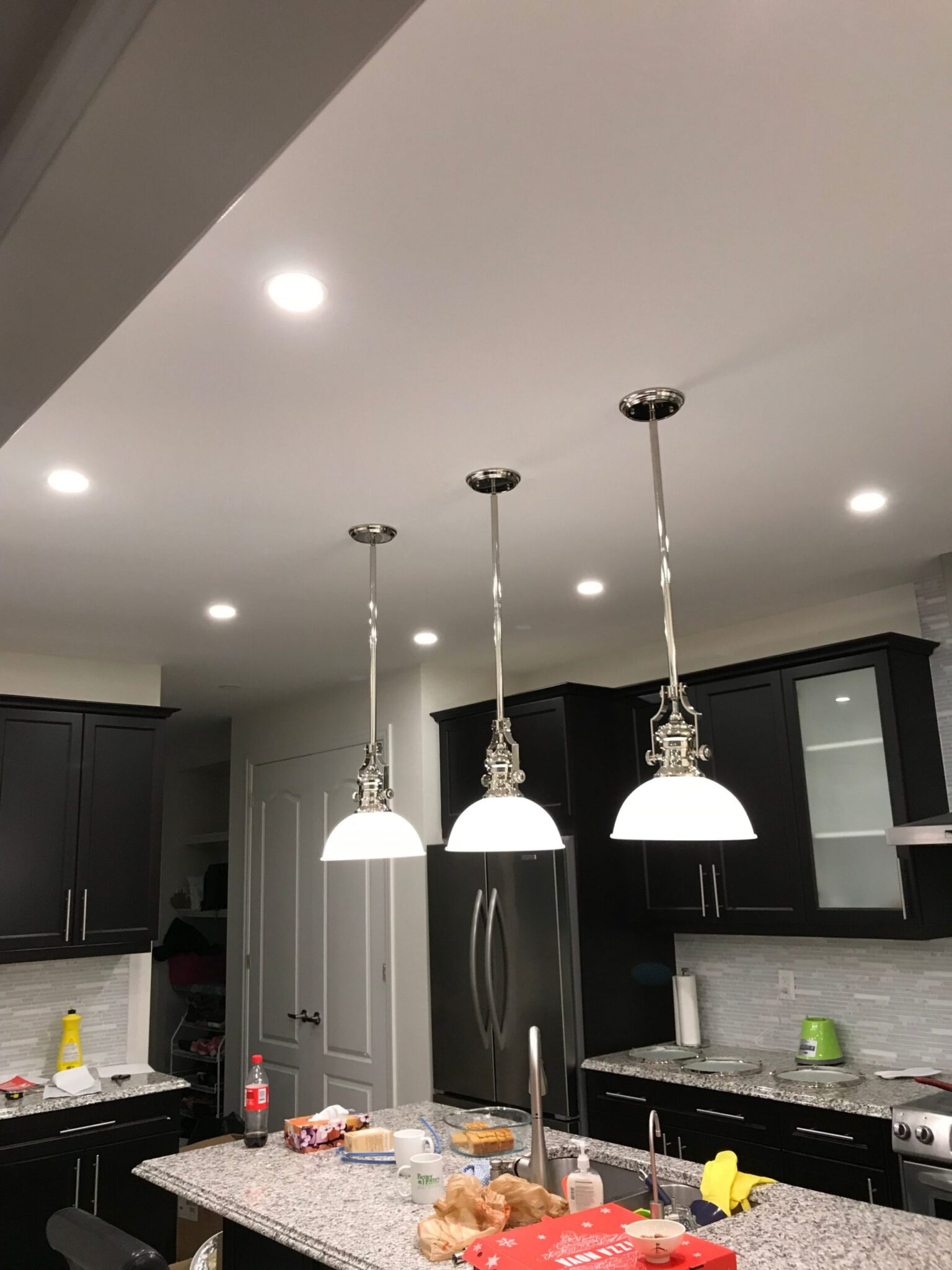When it comes to kitchen design, lighting is often an overlooked aspect. However, proper lighting can make a huge difference in the functionality and aesthetics of your kitchen. One type of lighting that is commonly used in kitchens is pot lights, also known as recessed lights. These lights are installed in the ceiling and provide a clean and modern look. But how do you determine the right pot light placement for your kitchen? Here are some tips and tricks to help you out.1. Pot Light Placement in Kitchen Design: Tips and Tricks
The first step to achieving the perfect pot light placement in your kitchen is choosing the right lights. There are a variety of pot lights available, including different sizes, shapes, and bulb types. It's important to consider the size and layout of your kitchen, as well as the function of the lights. For example, if you have a larger kitchen, you may want to opt for bigger pot lights to provide adequate lighting. LED bulbs are also a popular choice for their energy efficiency and long lifespan.2. How to Choose the Right Pot Lights for Your Kitchen
When it comes to pot light placement, there are some key dos and don'ts to keep in mind. First, do consider the function of the lights and strategically place them in areas where you need the most light, such as over the sink, stove, and countertops. Don't overcrowd the ceiling with too many pot lights, as this can create a harsh and unbalanced look. It's also important to avoid placing pot lights too close to each other, as this can create a "spotlight effect" and cause shadows.3. The Dos and Don'ts of Pot Light Placement in Kitchen Design
If you have a small kitchen, pot light placement is crucial in maximizing both light and space. Consider using smaller pot lights to avoid overwhelming the space and creating a cluttered look. Strategically placing pot lights along the edges of the ceiling can also create the illusion of a larger and more open space. And don't forget to layer your lighting with other types, such as under cabinet lights, to add depth and dimension to the room.4. Maximizing Light and Space: Pot Light Placement in Small Kitchens
Pot light placement is an important aspect of overall kitchen lighting design. These lights can provide general lighting for the entire room, as well as task lighting for specific areas. When planning your kitchen lighting, consider the different zones and functions of the space and how pot lights can help enhance them. For example, in a kitchen with an island, pot lights can be placed above to provide both ambient and task lighting.5. Kitchen Lighting Design: The Importance of Pot Light Placement
Pot lights not only serve a functional purpose, but they can also add style to your kitchen. When placed strategically, they can highlight design features such as a backsplash, kitchen island, or feature wall. Consider using dimmer switches to control the intensity of the pot lights and create a cozy and inviting atmosphere for entertaining. And don't be afraid to get creative with the placement of your pot lights to add a unique touch to your kitchen.6. Creating a Functional and Stylish Kitchen with Pot Light Placement
The layout of your kitchen can also play a role in determining the best pot light placement. For example, in a galley kitchen, pot lights can be evenly spaced along the length of the ceiling to provide balanced lighting. In a U-shaped kitchen, pot lights can be placed strategically above the countertops and sink. And in an open concept kitchen, pot lights can be used to define different areas and create a cohesive look.7. The Best Pot Light Placement for Different Kitchen Layouts
One common question when it comes to pot light placement is how many lights are needed for a specific kitchen size. While there is no exact formula, a general rule of thumb is to have one pot light for every 4-6 square feet of ceiling space. However, this can vary depending on the size of the pot lights and the overall lighting plan for the kitchen. It's always best to consult with a professional to determine the optimal number for your specific kitchen.8. How to Calculate the Optimal Number of Pot Lights for Your Kitchen
Pot lights are not just for providing general lighting, they can also be used to highlight specific design features in your kitchen. For example, if you have a beautiful piece of artwork or a unique backsplash, placing a pot light above can draw attention to it and add visual interest. This can also help create a focal point in the room and add personality to your kitchen.9. Using Pot Lights to Highlight Design Features in Your Kitchen
While pot lights can add a lot to your kitchen design, there are some common mistakes to avoid when placing them. As mentioned earlier, overcrowding and uneven placement can create an unbalanced and harsh look. Another mistake to avoid is using the wrong type of bulb, such as a halogen bulb, which can emit a yellowish light and create a less than ideal ambiance. It's important to carefully plan and consider all factors before installing pot lights in your kitchen.10. Common Mistakes to Avoid When Placing Pot Lights in Your Kitchen
Pot Light Placement in Kitchen Design: Creating the Perfect Ambiance

When it comes to designing a kitchen, lighting is a crucial factor that often gets overlooked. Not only does it serve a functional purpose, but it also plays a significant role in setting the overall ambiance of the space. Pot lights, also known as recessed lights, are a popular choice among homeowners for their sleek and modern look. However, proper placement of these lights is essential to achieve the desired effect in your kitchen design.
Choosing the Right Placement

The first step in determining the placement of pot lights in your kitchen is to understand the layout and purpose of each area. Consider the different tasks that will be performed in each part of the kitchen, such as cooking, prepping, and dining. This will help you determine the type and intensity of lighting needed in each area.
For example, in the cooking area, you may want to focus on task lighting to ensure proper visibility while preparing meals. This can be achieved by placing pot lights directly above the countertops and stove. In the dining area, on the other hand, you may want to create a more intimate and cozy ambiance. This can be achieved by using dimmable pot lights and placing them in a grid pattern on the ceiling.
Consider the Size and Layout of Your Kitchen

The size and layout of your kitchen are also crucial factors in determining the placement of pot lights. For smaller kitchens, pot lights can be used strategically to create an illusion of a larger space. By placing them in the corners and along the edges of the room, the light will bounce off the walls and make the room feel more open and airy.
For larger kitchens, pot lights can be used to highlight specific features or areas of the space. For example, if you have a kitchen island, placing pot lights above it can draw attention to this focal point and create a dramatic effect.
Final Thoughts

When it comes to designing a kitchen, proper lighting is key in creating the perfect ambiance. Pot lights can add a modern and sophisticated touch to your space, but it's essential to consider their placement carefully. By understanding the layout and purpose of each area in your kitchen and considering the size and layout of the space, you can achieve a well-lit and functional kitchen that also sets the right mood for your home.

























































































